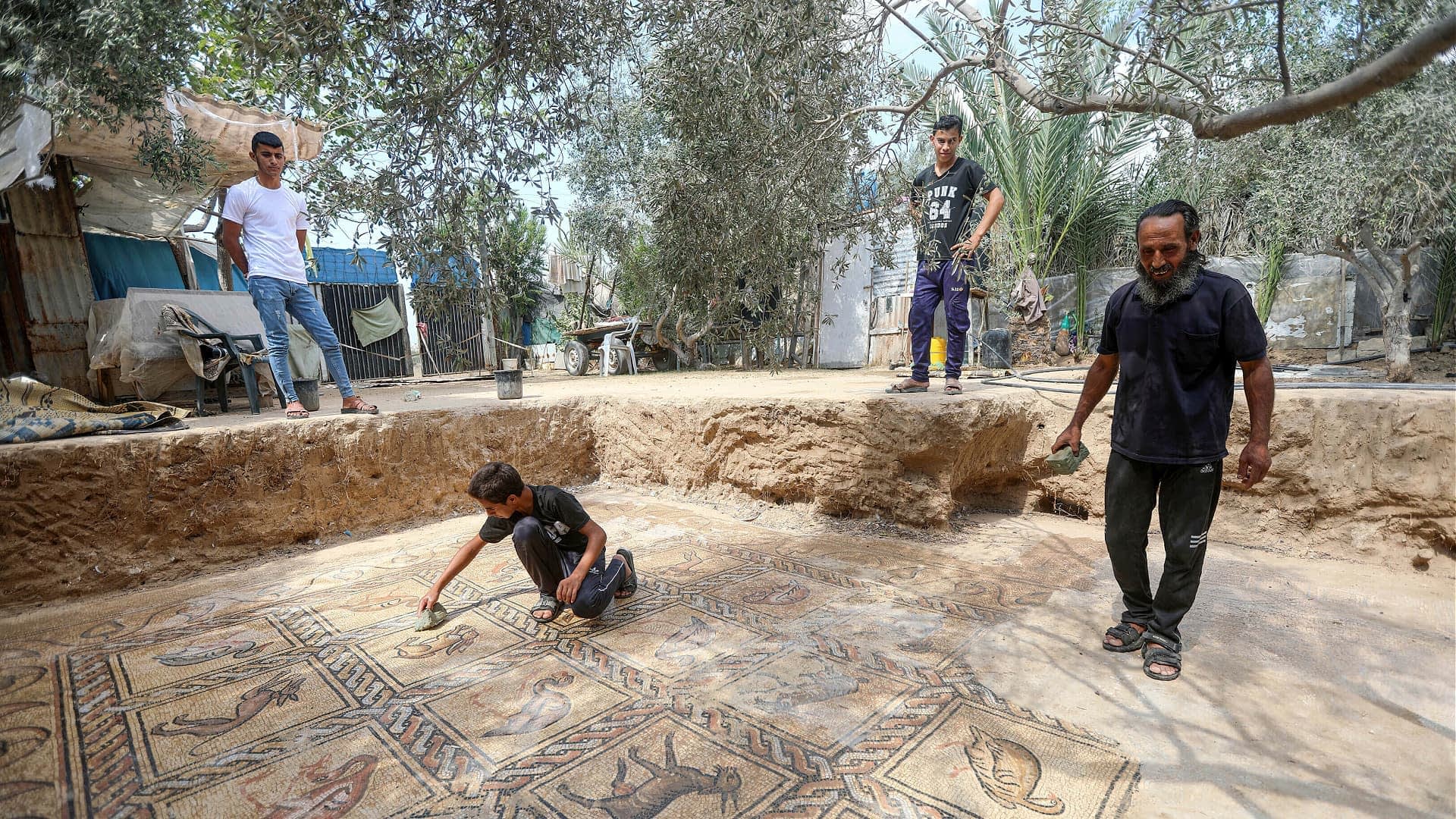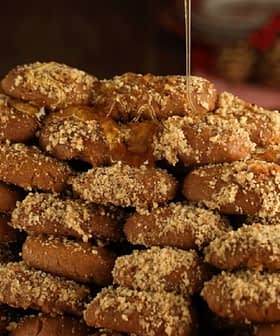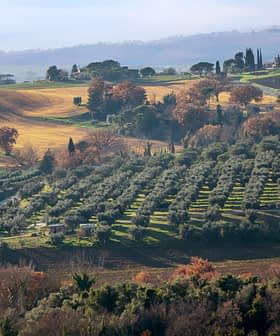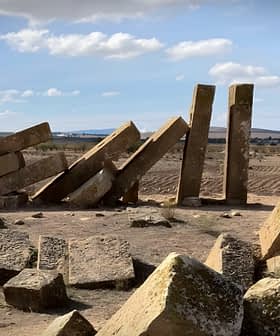Olive Farmer Unearths an Ancient Mosaic in Gaza
The Byzantine-era floor was discovered accidentally. However, the remains of walls and glass artifacts show that the area could yield even more stunning discoveries.
 Byzantine-era mosaic floor in Gaza, Palestine - 18 Sept 2022 (AP)
Byzantine-era mosaic floor in Gaza, Palestine - 18 Sept 2022 (AP) Archaeologists in Gaza are exploring an ancient Byzantine floor discovered in an olive grove, believed to be the most well-preserved mosaic ever found in the region. The discovery, which includes colorful decorations depicting animals and scenes of Byzantine life, highlights the enormous archaeological potential of the area and the need for urgent protection due to the risk of further damage from nearby conflicts.
The Palestinian Ministry of Tourism and Antiquities has confirmed that archaeologists are working in an olive grove near the Bureji refugee camp in Gaza.
They are exploring the remains of an ancient Byzantine floor discovered by a local olive grower that dates back to somewhere between the 5th and the 7th century CE.
These are the most beautiful mosaic floors discovered in Gaza, both in terms of the quality of the graphic representation and the complexity of the geometry.
According to Smithsonian Magazine, Salman al-Nabahin noticed that several young olive trees recently planted were not rooting as expected. He dug underneath them with his son and found what experts now believe is the most well-preserved and detailed mosaic ever found in Gaza.
The olive farmer explained that the unique nature of the findings was not evident at first. “I searched on the internet,” he told Reuters. “We learned it was a mosaic belonging to the Byzantine era. I see it as a treasure, dearer than a treasure. It isn’t personal; it belongs to every Palestinian.”
See Also:2,300-Year-Old Olive Oil Lamp Unearthed in the West BankOnce the roots and soil had been removed, the first glimpse of the floor revealed colorful decorations depicting animals and scenes of Byzantine life. Experts still have not determined whether the mosaic was part of a religious or residential area.
The Palestinian archaeologists are now working to bring the entire site to light. “The archaeological discovery is still in its early stages, and we await to know more of the secrets and civilization values,” the ministry wrote.
René Elter, an archaeologist from the French Archeology School of Jerusalem, which is assisting with the excavation, told the Associated Press that “these are the most beautiful mosaic floors discovered in Gaza, both in terms of the quality of the graphic representation and the complexity of the geometry.”

Byzantine-era mosaic floor in Gaza, Palestine — 18 Sept 2022 (AP)
“Never have mosaic floors of this finesse, this precision in the graphics and richness of the colors been discovered in the Gaza Strip,” he added.
So far, Salman al-Nabahin’s find has allowed archaeologists to identify another area that indicates the presence of walls and artifacts, both of which may lead to further discoveries.
One of the already excavated holes shows 17 tiles with mosaic iconography, while two others show tiles that might have been damaged or displaced over time by the roots of an old olive tree. The mosaic itself seems to cover an area of approximately 23 square meters.
Given the crucial role of the area as a trading hub for many different civilizations over many centuries, such findings confirm the enormous archaeological potential of the Gaza Strip.
Asa Eger, an archaeologist of the University of North Carolina-Greensboro who specialized in Byzantine and Islamic archaeology in the Levant, told The Art Newspaper that “it is a spectacular find, especially as our knowledge of archaeology is sadly so spotty given circumstances there.
“Gaza was very important during the period of this mosaic and known for its burgeoning wine production exported across the Mediterranean,” he added.
Local experts warned that such a unique site must be fully protected. The area is located near the Israeli border, and given the high tensions between the two sides, it is considered at risk of further damage.
Last month, a three-day clash led to shelling in the area. The olive farmer covered the visible portions of the floor with tin sheets to preserve the site. According to Elter, “it is imperative to quickly organize an emergency rescue intervention.”
Share this article









